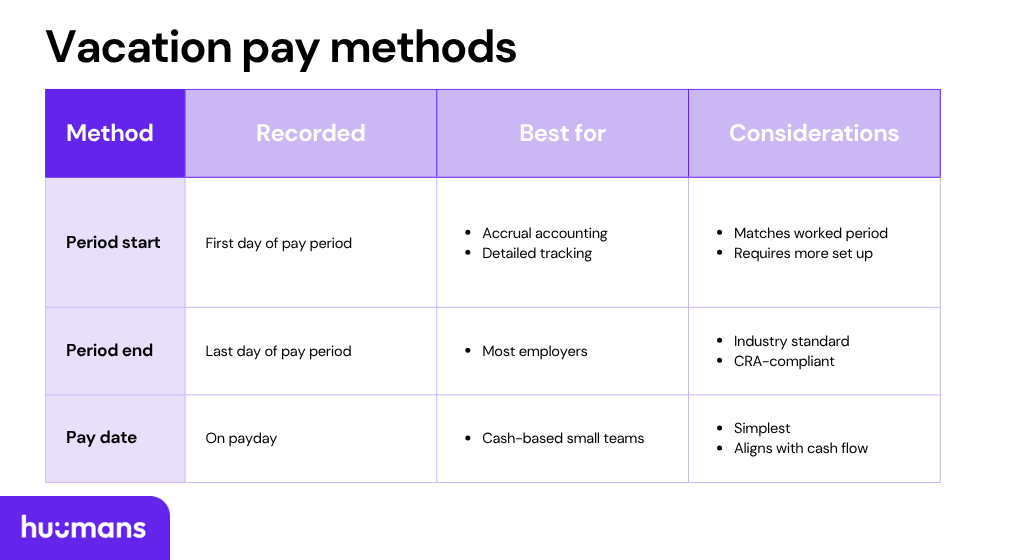

Vacation pay in Canada is usually 4% of earnings (two weeks), 6% after five consecutive years of employment, and 8% after 10 years. However, this can vary depending on provincial or territorial standards.
Payroll software gives you three options for when vacation pay is accrued (earned) and recorded. As you get set up, it’s important to pick one that fits your accounting method and payroll setup.
What it means: Vacation pay is calculated based on the start of the pay period.
Best for:
Why: This method ties vacation pay directly to when employees start earning their wages. It’s ideal for businesses that report by monthly or quarterly financial periods and want payroll expenses to match when the work happens.
What it means: Vacation pay is calculated as of the last day of the pay period.
Best for:
Why: Vacation pay is legally earned as work is completed, so recording it at the end of the pay period matches the employee’s entitlement with labour laws. It’s also the default option in most Canadian payroll software, and what the Canada Revenue Agency (CRA) expects when reviewing records.
Example: A restaurant pays staff bi-weekly. Vacation pay accrues at the end of each pay period, ensuring totals match the hours worked and simplifying ESA compliance.
Looking for small business payroll software? See our helpful checklist.
What it means: Vacation pay is recorded when employees are paid.
Best for:
Why: It’s straightforward. You only record vacation pay when you pay it, keeping your books clean. You also avoid tracking accrual balances, which is handy if you’re managing cash flow tightly.
Example: A landscaping company pays out vacation pay on every paycheque. No accruals, no carryovers — just simple, cash-based tracking.

You can find them on the Government of Canada’s website.
Here’s an alphabetical list, linked to the appropriate website.
Yes. Employment standards across Canada guarantee that all workers earn vacation time and vacation pay, regardless of their employment status.
Yes it does. But you have to select the method you’re using to calculate vacation pay. And with Huumans Payroll, you can also pay up to 5 employees free for the first year.
It calculates how much vacation an employee’s entitled to. But this is only the federal standard. The calculator doesn’t include provincial or territorial guidelines.
Fine print changes all the time. We do our best to keep things accurate and helpful, but this blog doesn’t replace your accountant, bookkeeper, or lawyer.
If you catch something off, let us know and we’ll fix it. And if we link to other sites, that’s just us sharing resources — what they say is on them, not us.